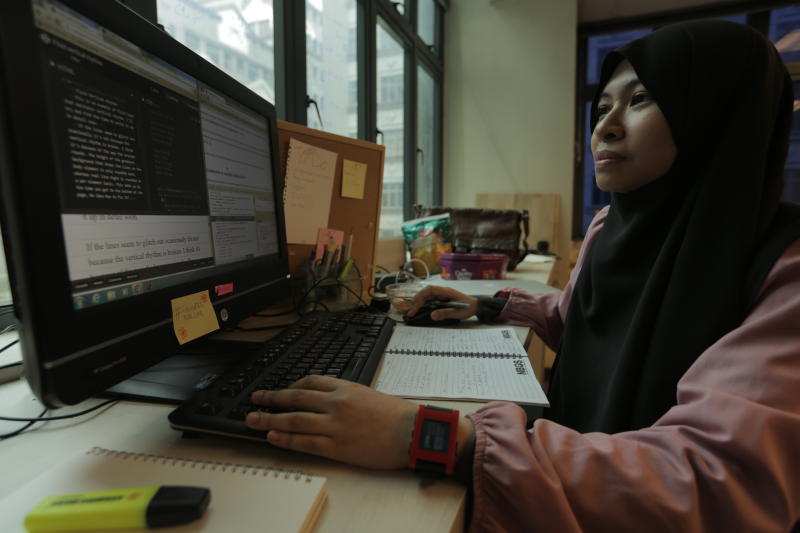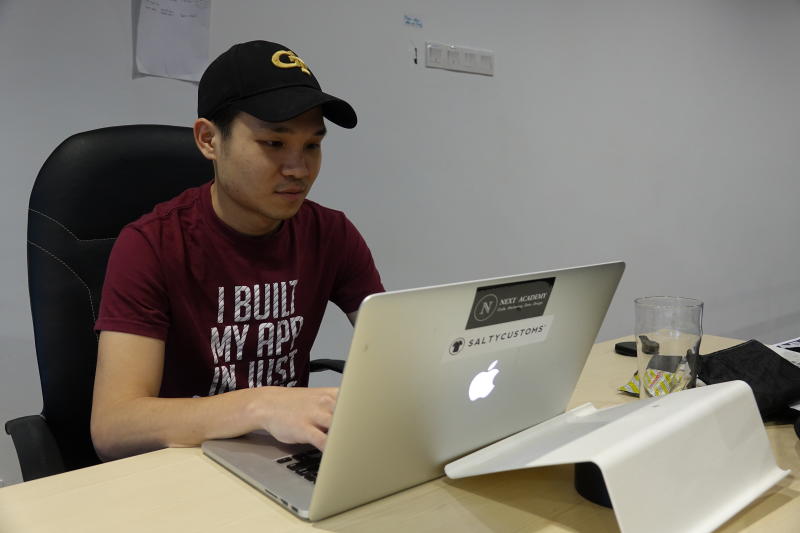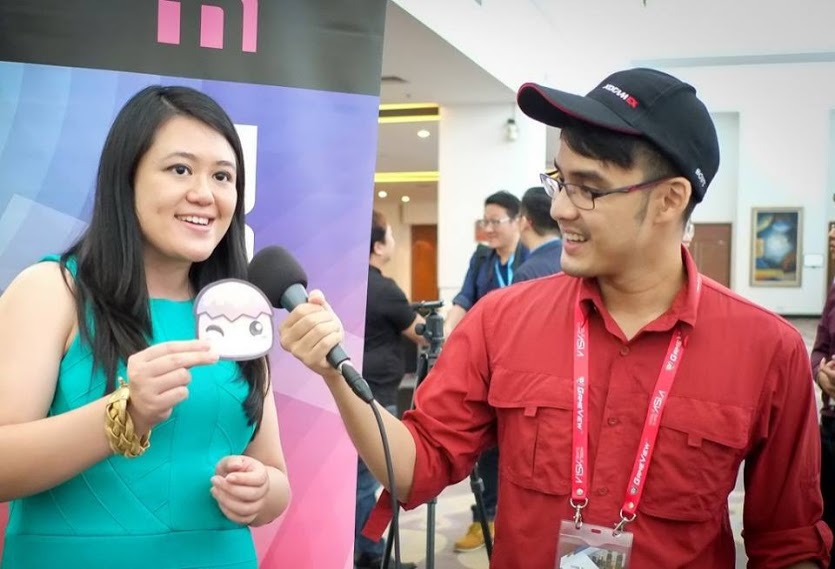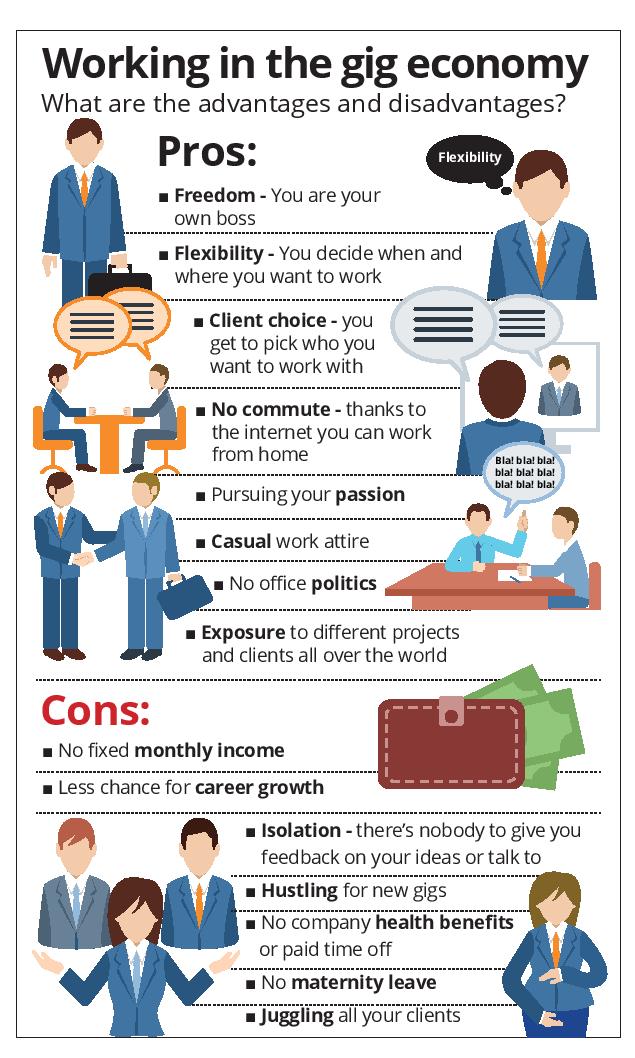WHEN the oil and gas industry slowed down, Teh Wen Ling found himself unceremoniously made redundant. To earn some extra cash, he decided to pick up some side freelance jobs, or “gigs” – including being an Uber driver.
In making ends meet, Teh found himself part of a new peer-to-peer revolution in freelancing, known as the “gig economy”, which has been spurred on by tech-driven platforms like ride-hailing service Uber, and accommodation rental site Airbnb.
Young Malaysians are becoming increasingly drawn to the gig economy lifestyle, which is all about freelance gigs and short-term jobs where “giggers” are free to choose where, when and how they work.
“Technology has enabled the creation of user-friendly platforms like Uber, which has linked me to a pool of customers,” said Teh, 27, who gave the gig economy a try for a month, while he was looking for a new job.
Read more: The oil crisis has hit the boys of Miri, Sarawak, in a bad way
“What also encouraged me to join was the faster hiring process – two days in fact – compared to the usual wait in office jobs,” he added.
Teh isn’t the only one to choose gigging these days.
Chris Yong, 28, a corporate banker, has a part-time gig running a guesthouse using peer-to-peer homestay network Airbnb.
He chose to rent out his unit through Airbnb because it allows him to reach customers directly.
The platform, which has 2,566 “hosts” in Kuala Lumpur alone, allows hosts to review customers, which makes it easier for Yong to choose who to rent to.
“It’s good in the sense you get to assess potential customers. I’m quite selective, so if they don’t have good reviews or are a new user I won’t rent it to them,” he said.
Aside from the technical functions available through the app, it’s also a matter of earning more money, said Yong.
“If I used a real estate agent, I may get RM1,200 a month. I charge around RM120 a day – I just need to rent it for 10 days to make the same amount!” he said, adding that the market in Kuala Lumpur still has much room to grow.
With the ability to start earning almost immediately, and at your own pace, it’s unsurprising that a growing number of youth have flocked onto the gig bandwagon. And now that Prime Minister Datuk Seri Najib Razak has announced additional incentives for potential Uber drivers at the recent Budget tabling, the gig economy looks set to rise even further.
Temporary workers represent 34% of the Asia-Pacific workforce, a 10% increase since last May, according to statistics from global recruiting agency Kelly Services.
In Malaysia, Kelly receives 100 applications for part-time work per week, said Faizah Othman, service manager in Kelly Services.
“Traditional talent acquisition models are being challenged, fuelled by competitive pressures and technological advances,” she said, adding that 94% of their applications came in via social media ads.
“Companies only looking to recruit full-time staff are missing out on some of the best talent in the market. By contrast, companies with more flexible HR policies, which allow them to recruit across all labour types, will gain a competitive advantage,” she said.
It’s clear the youth are challenging traditional human resource processes. Not only are they angling for work flexibility, they’re also searching for jobs online.
According to Helma Kusuma, country manager for Indonesia, Malaysia, Pakistan & Bangladesh for Freelancer.com, an online freelancing marketplace with over 20 million users, more than 220,000 Malaysians have signed up with them.
“In the past year alone, 50,000 new Malaysian users have joined,” said Kusuma, adding that three quarters of the applicants are millennials.
Internet-driven economy
Gigging isn’t just about house rentals and driving, though. Thanks to the borderless nature of the Internet, more and more people have access to a multitude of platforms to become entrepreneurs, said Foo Chek Wee, a HR professional in a multinational e-commerce company.
“There are digital marketplaces like fiverr.com, where you can engage a person to provide digital services like copywriting, photo retouching and article-writing online,” he said. “In the gig economy, you can cut through borders. You’re not limited to one country.”
This flexibility, and ability to be your own boss, is resonating with the youth.
Freelance animator Faten Azzuddin, for example, loves the fact that she can produce work for companies based in Kuala Lumpur – or anywhere else in the world – all from her home in Kelantan.
“In my field of work, I just need to be in front of a computer. And with the Internet, I’m able to communicate with clients wherever they are,” said Faten, 24, adding that she’s managed to handle 3D animation, graphic work and storyboarding this way.

Website programmer Razan said freelancing had its ups and downs, but liked being able to go at her own pace, although she wouldn’t give up the stable income her full time job provided. Photo: LIM MAY LEE/THE STAR
Her sister, website programmer Razan Azuddin, 28, has a full-time job, but has been gigging for five years and appreciates how it gives her the freedom to choose her gigs.
“While the more complex projects give better pay, I prefer to choose the simpler ones as I already have a busy full time job,” said Razan, adding that programmers can earn an average of RM80 per day.
Similarly, the use of technology has helped link clients to self-employed writer Suraya Zainuddin, who is the founder and content manager for Ringgit Oh Ringgit, a personal finance website aimed at millennials.
Suraya used to work in various NGO’s, but said her true passion was writing about finance, though the income she earned was also part of her decision to leave a traditional nine-to-five job.
“I specialise in communications, but the average salary in Ipoh was too low so I decided to work for myself,” said the 28 year old.
“Ninety-nine percent of my work is online, so technology is a big enabler in helping me earn a living.”
While writing is not known as a well-paying job, Suraya said she concentrates on international clients who pay in US dollars.
“When I first started, I joined freelancing platforms, submitted articles to websites like Vulcan Post and applied for as many writing jobs as possible,” she said, adding it’s important for giggers to network and display their work online so potential clients can see what they have to offer.
Read more: Getting creative with Malaysia’s young creativepreneurs
For musicians, technology has given them a new way to market themselves for gigs, rather than approaching bars or singing at open-mic nights hoping to get noticed.
Noticing the lack of a platform for local musicians to get noticed, Brian Foo founded Gig Fairy, a way to connect artists to clients.
“We have 250 musicians on our site, and I’d say 95% of them have full time jobs. They’re too busy to market themselves, let alone build their own website – which is where we come in.
From the feedback I’ve received from the artists, we’ve doubled the number of paid gigs for everyone,” said Foo, 28.
A challenging gig
With the flexibility afforded by the Internet, more and more IT-based professionals have decided to go the gig way, but Josh Teng, founder of coding school NEXT Academy, said it might eventually lead to a loss of creativity.
“In the gig economy, people are typically task-oriented, spending less time thinking creatively and more time multitasking multiple gigs. This reduces the odds of having serendipitous moments where great innovations are born. This is bad for the industry in the long run,” said Teng.
He added that gigging might lead to a drop in performance for those who still hold full-time jobs.
“We’re not built to work non-stop. I’ve heard managers complain about their staff performance – tiredness, punctuality – but it’s not just that. We need thinking time and rest to solve problems or learn faster,” he said.
For giggers who find their performance dropping, Teng said the most important thing is to keep focused, whether it be on their full time or on their gig.
“The way I get out of the wrong path fast is to focus on one thing at a time and occasionally stop to evaluate the journey. The big question is, what do you want in life? If you do choose to leave your full-time job, make sure you and your family can handle a downgrade in lifestyle if things go south.”

Teng said there’s a risk of reduced productivity in a full time job if giggers don’t focus on one thing at a time. Photo: NEXT Academy.
Some full-timers who’ve dipped their toes in the gig economy have had some less than positive experiences too.
Kaylee Kuah, 27, used to freelance in PR and events, but now works full-time in PR while gigging on the side doing copywriting and writing articles.
While she said the exposure and networking opportunities that came from freelancing were good, she found it challenging in terms of discipline.
“Working at home, it’s easy to let your work and home life blend together. It was important for me to maintain a regular schedule. You’re also alone with nobody to discuss ideas with so you tend to second guess yourself,” she said.
Even so, Kuah has no plans to leave the gig economy as it gives her the opportunity to pursue her passion – writing.
“It’s a way to get my voice out as opposed to a company message,” she said.
“Gigging also gives me variety in my daily life. It’s exciting to work on different projects.”






Leave a reply